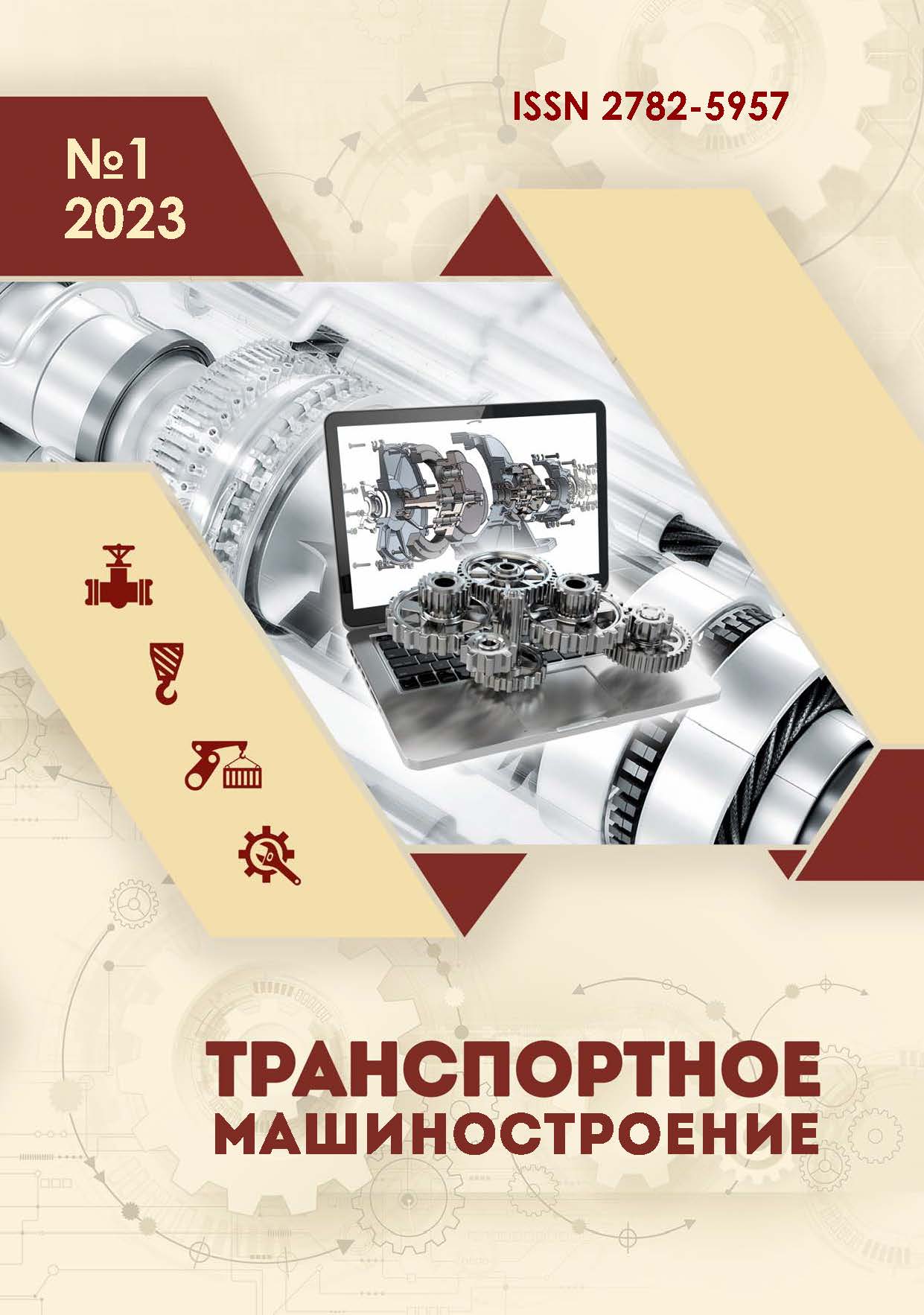Kursk, Kursk, Russian Federation
Kursk, Kursk, Russian Federation
UDC 629.1.03
Russian Library and Bibliographic Classification 344
The study objective is to develop approaches to making a mobile robotic walking-type system that moves based on bionic principles of movements. The developed system is equipped with six limbs and moves typically for some insects, which increases its cross-country capacity in difficult road conditions. The algorithm of the movement arrangement is described and the dynamic analysis of the movement of the executive mechanism links is carried out. A kinematic scheme is made and an algorithm for planning the trajectories of the robot's basis is developed. To implement the modeling, the task of moving the limb of a six-legged robot, presented in the form of a flat two-link mechanism, is considered separately. Based on the given functions, graphs of changes in the basis coordinates and hinge torques, providing the necessary movements of the robot along a given trajectory, are obtained. The direct dynamic problem for one robot leg, which is considered as a system with two degrees of freedom, is solved on the basis of the Lagrange equation. The developed equations are solved in Matlab environment. The torque values of the robot drives necessary for working out a given trajectory are obtained. The novelty of the work is in the development and research of the mechanisms of the walking drive of a mobile robot implementing an algorithm of step-by-step movement, which provides lower energy costs than existing analogues. The results will be useful in making mobile multifunctional robotic systems created on the basis of the insect-type movement, and operating independently in a large number of practical applications.
robot, movement, mechanism, parameters, problem, dynamics
1. Yatsun SF, Chzho PW, Rukavitsyn AN. Prospects for the development of mobile robotic systems with kinematic locomotors. Tendentsii v Razvitii Nauki I Obrazovaniya. 2018;39-3:33-35.
2. Pavlovsky VE, Panchenko AV. Models and algorithm of motion control of a small six-legged robot. Mekhatronika, Avtomatizatsiya, Upravlenie. 2012;11:23-28.
3. Politov EN, Rukavitsyn AN. Study of controlled motion bionic mini robot. IOP Conference Series: Earth and Environmental Science. 2017;1-8.
4. Lupehina I, Rukavitsyn A. Motion study of bionic mobile robot. Proceedings of 2015 International Conference on Mechanical Engineering, Automation and Control Systems. 2015:1-5.
5. Akylbekov EE. Mathematical model of kinematics and dynamics of a tree-like executive mechanism of a six-legged walking robot. Polytechnical Student Journal. 2017;4. Available from : http://ptsj.ru/catalog/menms/robots/71.html.
6. Tertychny-Dauri VYu. Dynamics of robotic systems. Saint Petersburg: NIU ITMO; 2012.
7. Yatsun SF, Mishchenko VYa, Politov EN. Kinematics, dynamics and strength of machines, instruments and equipment: textbook. Moscow: Alfa-M: INFRA-M; 2015.
8. Rukavitsyn AN, Efremov DI. Simulation of the motion of a mechanical system with two degrees of freedom in the package MATLAB/SIMMECHANICS. Youth and Science: Step to Success: Collection of Papers of the 4th All-Russian Scientific Conference. Kursk: Southwest State University. Moscow Polytechnic University; 2020.
9. Yatsun SF, Vorochaeva LYu, Malchikov AV. The study of the motion of three-axis robot with two-axis joints on a rough surface. Bulletin of BSTU named after VG Shukhov. 2018;7:86-96.
10. Rybak LA, Mamaev YuA, Virabyan LG. Correction algorithms synthesis for the motion path of the hexapod robot output link based on the theory of artificial neural networks. Bulletin of BSTU named after VG Shukhov. 2016;12:142-152.
11. Rukavitsyn AN, Lupekhina IV. Development of an algorithm for computer simulation of the motion of a mobile mini-robot moving with the separation from the support surface. Izvestia of Samara Scientific Center of the Russian Academy of Sciences. 2011;13(4-4):1013-1017.
12. Rybak LA, Mamaev YuA, Malyshev DI. Software module of hexapod robot specified movement trajectory of output unit for 3D printing of products. Bulletin of BSTU named after VG Shukhov.2016;8:155-165.







